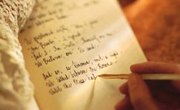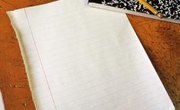A close reading essay is an in-depth paper that carefully studies a short work or a section of a longer one. Rather than treat the larger themes of the work alone, a close reading essay goes into details and substantiates observations with examples from the work being examined. Analyze the techniques that writers employ to convey their ideas and feelings and then explain the results of your analysis. You need to not only make observations about parts of the work that stand out, but back them up with examples from the text.
Carefully read the work or section of the work being studied several times. Make notes as you read; don't wait until you have finished with the belief that you will remember everything. This part of the process is about gathering information. Note anything that stands out, symbols that recur or turns of phrase that don't make sense. Oftentimes the things you do not follow can lead to an important observation, so trust your instincts.
Develop an outline of your essay based on your notes, putting together observations that seem related. Delve into details that puzzle you, such as why something is described oddly, or an action by a character that may not make sense. Assemble the observations into groups, and note details to cover in the essay under each group. Draw out some of the persistent themes or significant characteristics and think about how they add to the overall mood of the work. To identify themes, ask yourself what lesson the author of the work likely wanted readers to know. Look for words or phrases that repeat since these often indicate an important idea that may be related to the theme or some other significant characteristic of the work.
Write your essay from the outline fleshing out details, presenting your observations, drawing conclusions about what you feel the author is saying and backing up those conclusions with examples from the text. The more you can substantiate your observations with the author's own words the more convincing the essay will be. If the conclusions you have drawn can't be reasonably supported by the text, modify them until you have adequate text support to back them up.
Go back and read the work you are examining again, in light of what you have written, to see if anything further stands out, or even if you still agree with what you have written. You may find some surprising new things, or want to modify your thoughts a bit. Proofread carefully before turning in your essay.
Related Articles
References
Writer Bio
Bill Brown has been a freelance writer for more than 14 years. Focusing on trade journals covering construction and home topics, his work appears in online and print publications. Brown holds a Master of Arts in liberal arts from St. John's University and is currently based in Houston.











